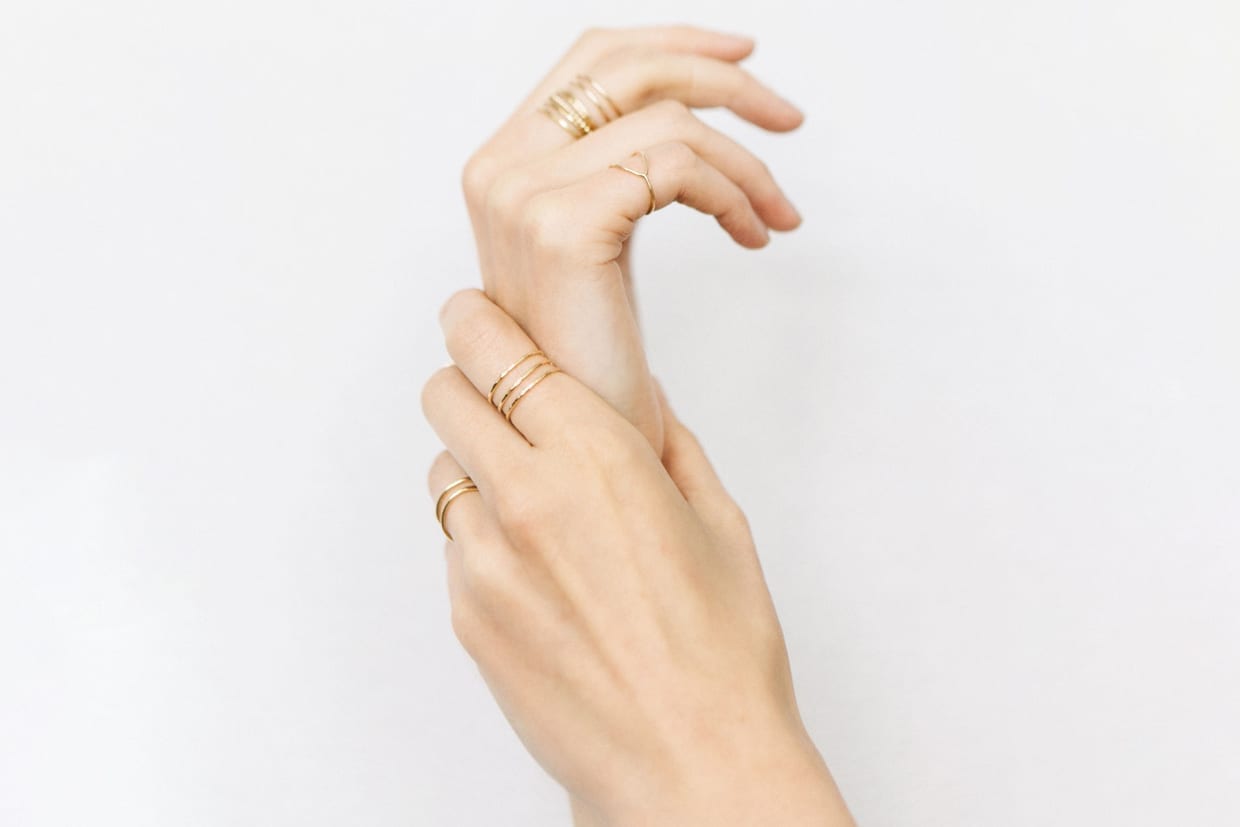
Combat Aging Hands With FDA-Approved Fillers
Even though aging gracefully is trending up, accepting it can be a (sometimes) difficult task. Common concerns range from the face to the neck to varicose veins and cellulite, with treatments ranging from A to Z, offering the ability to halt aging in its tracks.
But according to John Burns, Jr., M.D., a Dallas-based plastic surgeon, the hands actually show more age than the face. And patients begin to show a concern about their hands in their “50-60s because they have been treating their face for years, and their hands are starting to give away their age,” he says.
“There’s this discrepancy between the aging of the area that we really pay attention to, let’s say the face or the décolleté, versus the hands. When I see a patient who looks great, the face is well protected, [but] then they bring their hand up to their face and it looks totally out of context, like two different people,” adds Z. Paul Lorenc, M.D., F.A.C.S., a board-certified plastic surgeon in New York City.
Lorenc says to think about it like this: you must have memories, as a child, of your parents applying sunscreen to your face and body. But you probably have no memory of your parents putting sunscreen on your hands. And yet, the skin on your hands is no different than the skin on your face — it should be protected.
“We start to lose our collagen in our bodies at the age of, believe it or not, 20, and you lose one percent of your collagen content in your body every year, which is frightening if you think about it,” says Lorenc. “But the same thing happens in the hands … There are two components to aging of the hands. One is obviously dyschromia (or color changes) … [and] extrinsic factors, like sun exposure and those other blotchy brown spots, the uneven color on the hand, and that is really due to environmental effects, and that happens with sun exposure. But there is also an intrinsic change, and that’s the quality of the skin and the volume in the dorsum in the hands.” As babies our hands are puffy, thanks to fat and subcutaneous tissue. But, as we age, that fatty tissue starts to decrease, leading to a thinning of the skin. The hand suddenly begins to look old.Now, there is something you can do about it. Last year, the FDA approved the use of Restylane Lyft for hands, making it the first (and only) hyaluronic acid filler for this purpose. And Lorenc (who was involved in the pivotal 2001 study for Restylane in the face, which came to the market in 2003) thinks that this, along with the FDA approval of Radiesse, a calcium hydroxylapatite filler, helped raise awareness for hand filler procedures.
“People have been talking about seeing their age in their hands for years, that part is not new. The new part is the cool new options to approve appearance,” says Tara Rao, M.D., F.A.A.D., a board-certified dermatologist at Schweiger Dermatology Group in New York City.
Restylane (the hyaluronic acid filler) — Lorenc says 7 percent of our skin is actually made out of hyaluronic acid — “is a sugar that is able to absorb water and plump up hollow areas of the skin,” says Rao. “When placed just under the skin, it adds volume, making the skin thicker, smoother, and hides wrinkles, tendons and prominent veins,” adds Burns. And, it can be reversed with an enzyme called hyaluronidase.
“Radiesse is in a class of fillers called volume biostimulatory fillers, and [the] material is called calcium hydroxylapatite, which is a coral. Think of it as little beads of coral that are 20 to 40-micron spheres (very tiny spheres) suspended in methylcellulose. Once you inject it, whether into the hand or the face, it creates your own collagen,” says Lorenc. And in terms of results, “you get a little more volume with Radiesse,” Burns says.
While cost and amount of time each last can vary, Lorenc and Burns both use a cannula for the injection to minimize pain and achieve better results. “It’s about technique as well, [and] it’s about dilution. I customize pretty much every filler I use, so it’s rare that I just inject it straight out of the box,” Lorenc says.
And as for risks? There may be swelling and some bruising or soreness, but the risks are limited. “You can never say that the risk is zero because obviously that is not true … but the risks are so minimal with these procedures.” Lorenc says. But neither are to be used on the fingers because there is not enough space in the fingers — just the backs of the hand.Keeping that in mind, if you’re looking for an alternative to fillers, there are a few options. You can resurface with lasers via Fraxel, says Burns. Both Rao and Lorenc recommend intense pulsed light therapy (IPL) to help with the discoloration on the hands. Lorenc has even used platelet-rich plasma (PRP) with microneedling to address the hand’s texture.
But Lorenc says it all comes down to the treatment plan. “Patients will come in … and they will also do IPL on the back of the hand to get the color even, get rid of the browns and the reds — the blotchiness — and then volumize their hands. It’s really two-fold. Both complement each other,” he explains. “Most of the time, I think it’s necessary to do both to get a good result.”
As an Amazon Associate, SRMS may earn a portion of sales from qualifying purchases.
